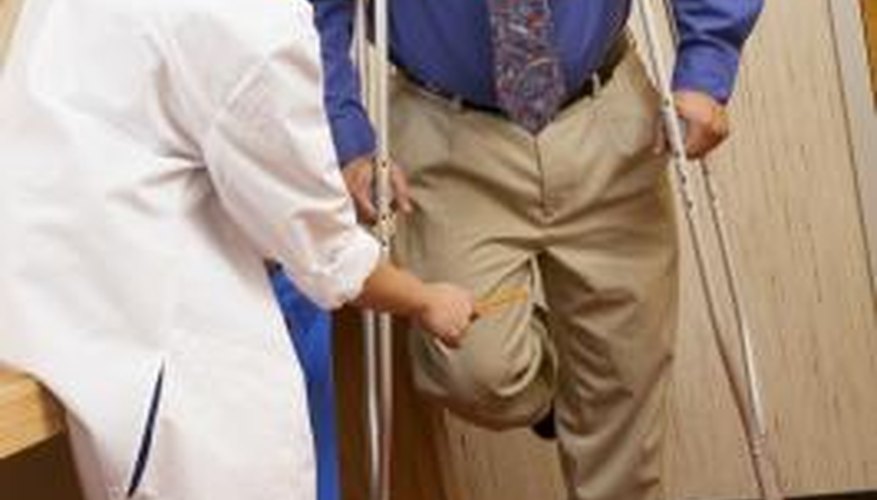Using crutches long-term may be necessary to help an injury heal, but there can also be side effects of that use. Experts at Natural Standard note that crutches are prescribed as a walking aid for people with injuries from the waist down but must be used correctly to prevent additional injuries. Get proper instruction on crutches' use before relying on your crutches for mobility, and be aware of the possible side effects you may experience from proper and improper use of crutches long-term.
Soreness in the Armpits

Although proper use of crutches precludes the user from resting the armpits on the top of the crutch cushions or from allowing the crutches to rub the sides of the upper torso, it happens. New users are often the most guilty of it, but long-term users must also refrain from getting lazy or trying to give their arms a rest by allowing the crutch cushions to rest on them. Resting and rubbing can make the armpits sore from the weight and the skin raw and sensitive from the friction.
Tingling or Numbness of the Hands or Arms
Because of the intricate nerves and blood vessels connecting the arm and shoulder, long-term pressure in that armpit area can cause tingling or numbness in the shoulders, hands or arms. Nerves and blood vessels can become compressed from extended pressure if the crutches user "hangs" on the crutches, rests the armpits on the crutches while walking or allows the head of the crutches to bang the armpits while walking. Keeping a distance of three fingers between the top of the crutch and your armpit helps prevent nerve issues.
Shoulder, Wrist, Palm Fatigue

When patients use crutches properly, it decreases the possibilities of problems for long-term users. However, proper use puts the patient's entire body weight on the shoulders, wrists and palms whenever the patient walks. If lots of mobility is necessary, and especially if frequent trips up and down stairs are required, the shoulders, wrists and palms can become fatigued and painful. Apply extra cushion grips on the handgrips and try to reduce mobility to give the sore joints more time to recover.
- When patients use crutches properly, it decreases the possibilities of problems for long-term users.
Atrophy in Lower-body Muscles

When muscles aren't exercised or used to bear the weight they were intended to, they begin to atrophy -- becoming weaker, less flexible and easily fatigued. Though crutches help a lower-body injury heal as it needs to, the lack of muscle use in the lower body from long-term use of crutches can cause deterioration in those muscles. That deterioration may produce aches and pains, and may require physiotherapy after the crutches are no longer necessary in order to regain strength and mobility lost in the affected lower-body muscles.
